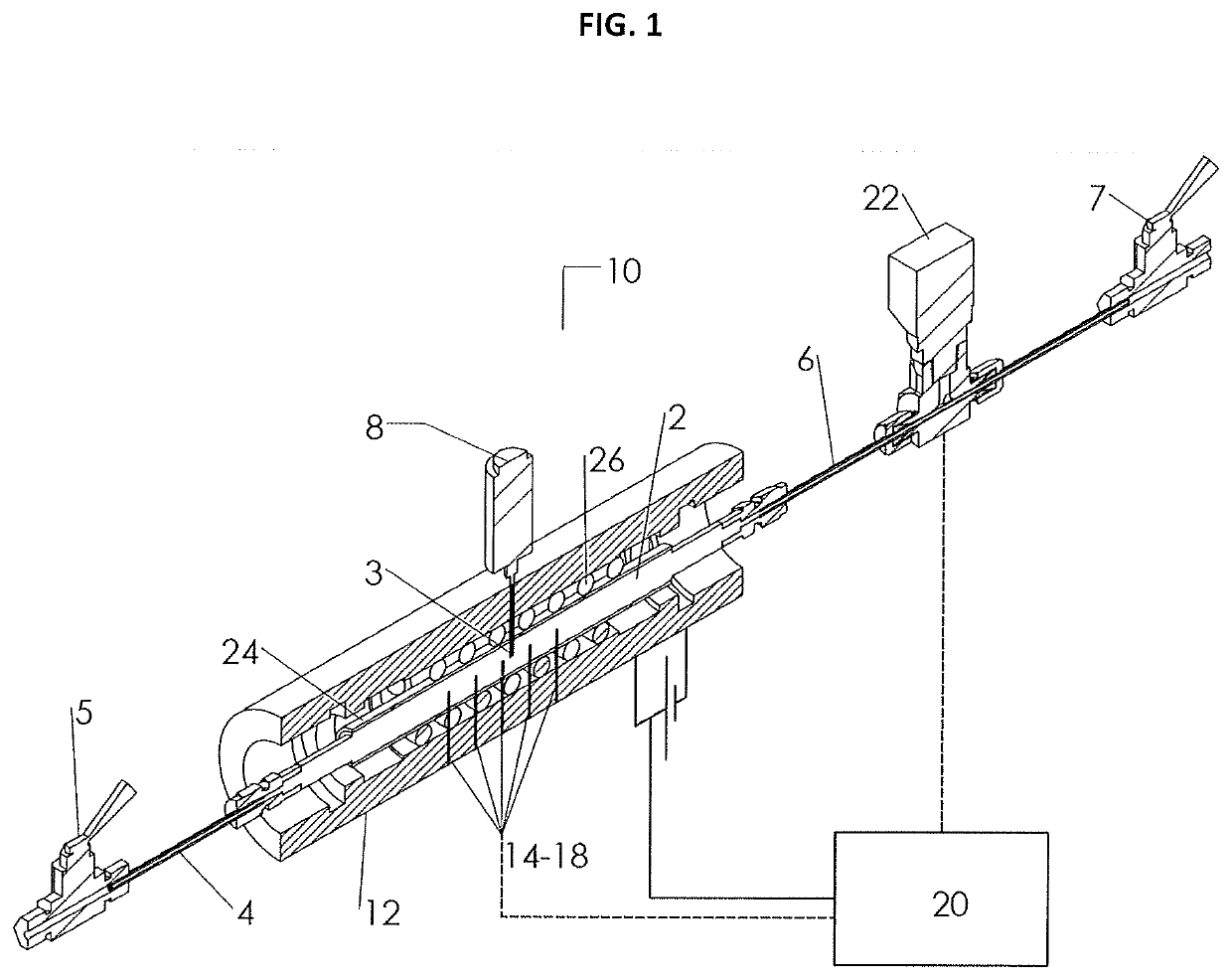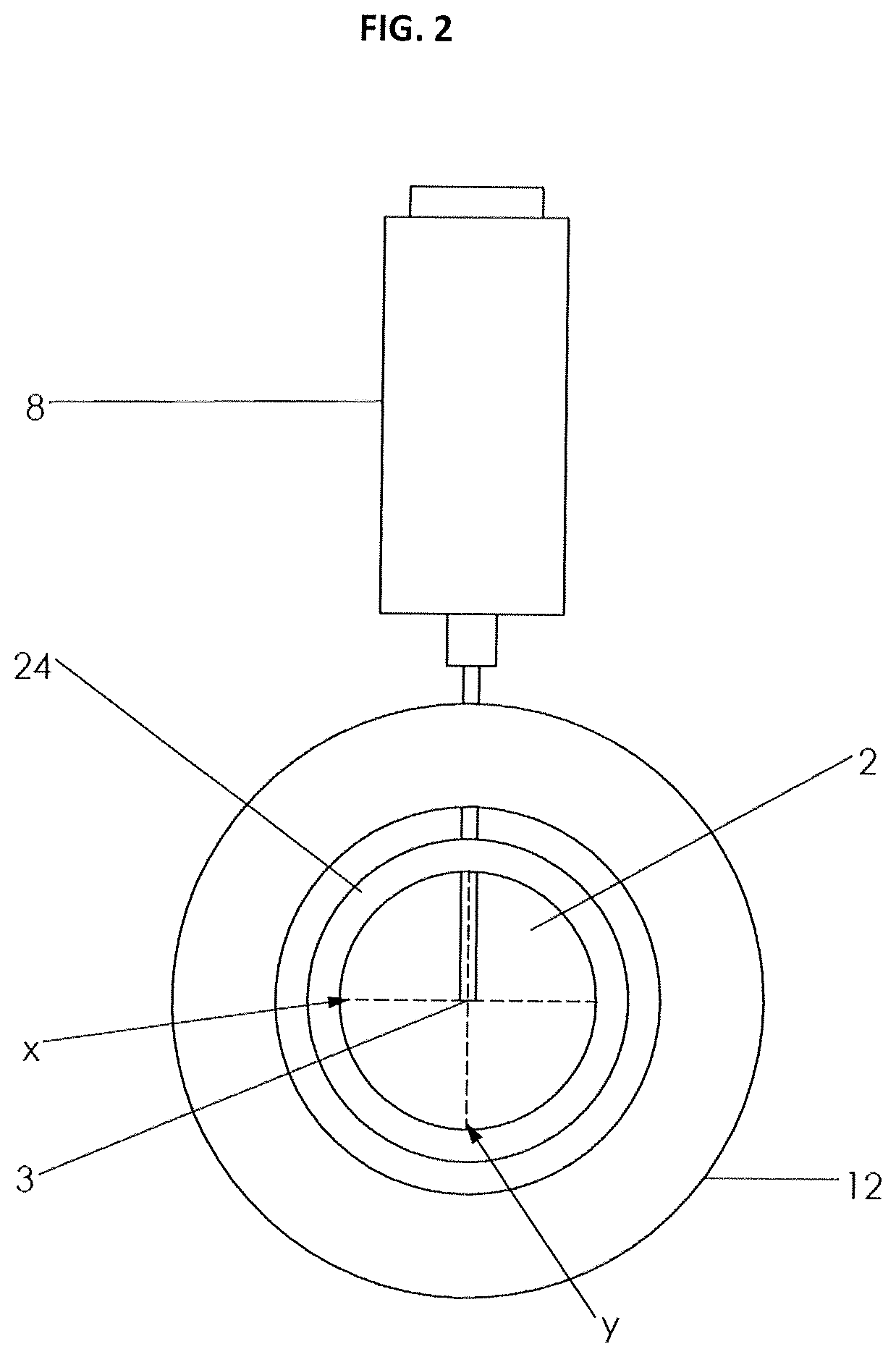Sensor for determining a physicochemical property of a liquid fuel
a liquid fuel and physicochemical technology, applied in the direction of fuel testing, material heat development, material testing goods, etc., can solve the problems of affecting engine performance including fuel consumption, engine operability, maintenance requirements, and large cost of cetane enhancers, so as to reduce the delay in waiting for fuel quality control analysis and improve yield
- Summary
- Abstract
- Description
- Claims
- Application Information
AI Technical Summary
Benefits of technology
Problems solved by technology
Method used
Image
Examples
embodiments
Example 1
[0079]With reference to FIG. 1, an embodiment of the sensor apparatus of this invention 10 was constructed from a cylindrical tube (stainless steel; length 15.24 cm; internal dia. 1.91 cm; internal volume 43.6 ml), which provides for a fixed-volume ignition chamber 2 defined by cylindrical structure 24. With these dimensions, the ignition chamber 2 had an aspect ratio of 8:1 and a surface-area-to-volume ratio of 5.7 / inch (2.2 / cm). The surface area of the cylindrical tube is calculated as the sum of areas of the interior wall of the cylindrical tube 24 and its two end caps. Five thermocouples 14-18 (K type) were connected along the length of the tube for measuring temperature, the measurements of which were transmitted to data control unit 20. A fuel injection port 8 (micro-syringe type and repeating dispenser sold by Hamilton) was fitted at the midpoint of the length of the cylindrical tube 24. The tip of the fuel dispenser terminated within the ignition chamber 2 at a poin...
example 2
[0082]The method of this invention as described in Example 1 was employed to measure the cetane number of a set of diesel and distillate fuels. The tests were run blind, meaning that the inventors did not have advance knowledge of the cetane number of each fuel. Instead, the inventors presented cetane number as determined by the apparatus and method of this invention to the supplier of each fuel, who thereafter in return supplied the cetane number for the fuel as determined by ASTM D-613. FIG. 6 is a graph plotting cetane number of each conventional fuel as determined by this invention versus the cetane number as measured by ASTM D-613. It is seen that the graph points lie on a straight 45 degree line representing essentially 1:1 correlation between the sensor of the current invention and the accepted ASTM method. This result indicates that the cetane numbers obtained from the sensor and method of this invention lie very close to the cetane numbers determined by ASTM D-613.
example 3
[0083]Example 1 was repeated with the exception that a set of unconventional fuels including biodiesel fuels and Fischer-Tropsch fuels were employed in place of the conventional fuels of E-1. Ignition delay was measured in the apparatus of this invention for each fuel at 300° C. FIG. 5 depicts a calibration curve plotting the cetane number for each unconventional fuel as determined by ASTM D-6890 versus peak ignition delay as determined by this invention. It is seen from FIG. 5 that as the known cetane number of the unconventional fuel decreases, the peak ignition delay as measured by this invention increases.
PUM
| Property | Measurement | Unit |
|---|---|---|
| volume | aaaaa | aaaaa |
| temperature | aaaaa | aaaaa |
| cetane number | aaaaa | aaaaa |
Abstract
Description
Claims
Application Information
 Login to View More
Login to View More - R&D
- Intellectual Property
- Life Sciences
- Materials
- Tech Scout
- Unparalleled Data Quality
- Higher Quality Content
- 60% Fewer Hallucinations
Browse by: Latest US Patents, China's latest patents, Technical Efficacy Thesaurus, Application Domain, Technology Topic, Popular Technical Reports.
© 2025 PatSnap. All rights reserved.Legal|Privacy policy|Modern Slavery Act Transparency Statement|Sitemap|About US| Contact US: help@patsnap.com



